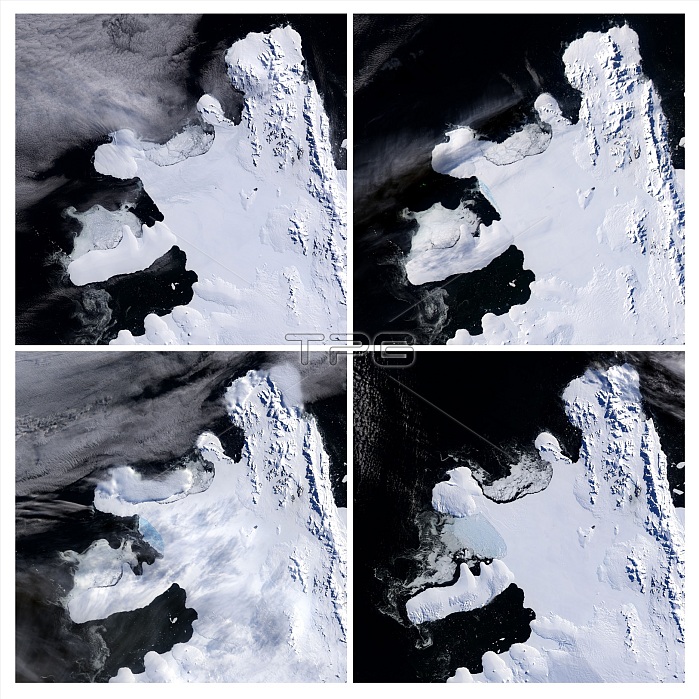
Composite image of the Wilkins ice shelf disintegrating. Ice shelves are thick slabs of ice that are attached to coastlines and extend out over the ocean. In the natural course of events, ice shelves often calve large icebergs. Beginning in the mid-1990s, however, some ice shelves began exhibiting a new behavior: rapid disintegration into small pieces, likely as the result of warming temperatures. On February 28, 2008, the Wilkins Ice Shelf on the Antarctic Peninsula exhibited such a phenomenon. The Moderate Resolution Imaging Spectroradiometer (MODIS) sensors on NASA's Terra and Aqua satellites provided some of the earliest evidence of the Wilkins Ice Shelf disintegration. Intact ice shelf appears white, and disintegrating shelf appears blue. The disintegration of the Wilkins Ice Shelf was announced by the National Snow and Ice Data Center, the British Antarctic Survey, and the Earth Dynamic System Research Center at Taiwan's National Cheng Kung. According to the institutions' joint press release, an iceberg measuring 41 by 2.5 kilometers (25.5 by 1.5 miles) broke off from the Wilkins Ice Shelf on February 28, leading to uncontrolled disintegration. The four MODIS images in this series show the rapid rate of disintegration; the growing region of pale blue on the ice shelf is crumbling, water-saturated ice. These images were taken between 2/28/08 and 3/17/08.
| px | px | dpi | = | cm | x | cm | = | MB |
Details
Creative#:
TOP22095969
Source:
達志影像
Authorization Type:
RM
Release Information:
須由TPG 完整授權
Model Release:
N/A
Property Release:
No
Right to Privacy:
No
Same folder images:

 Loading
Loading